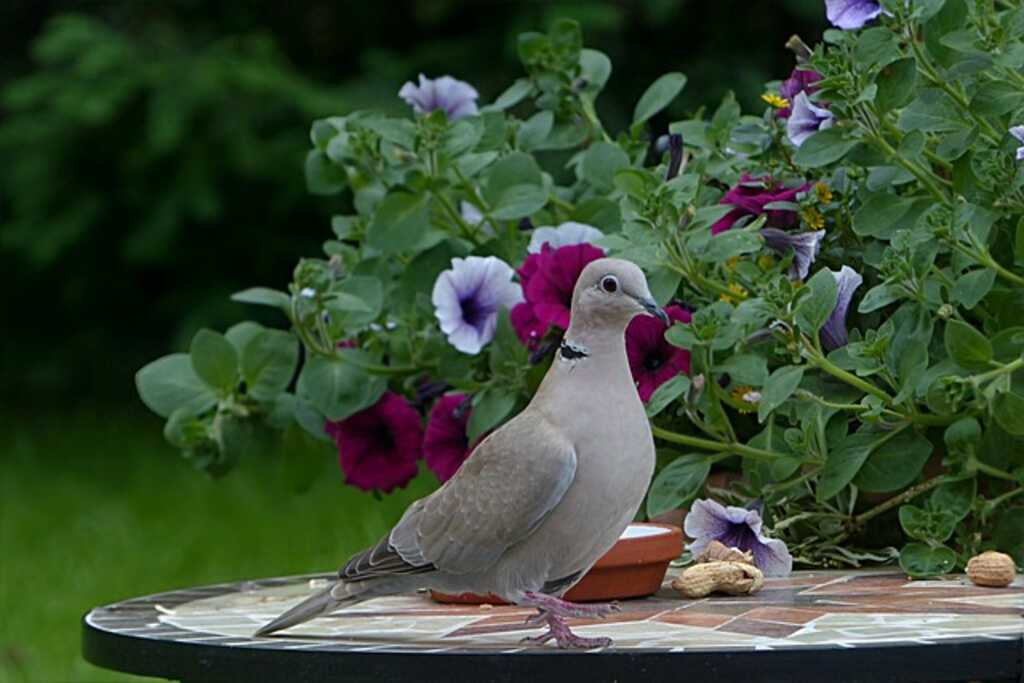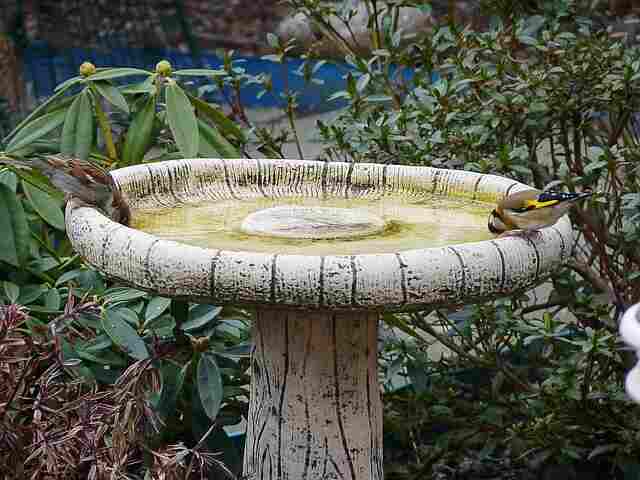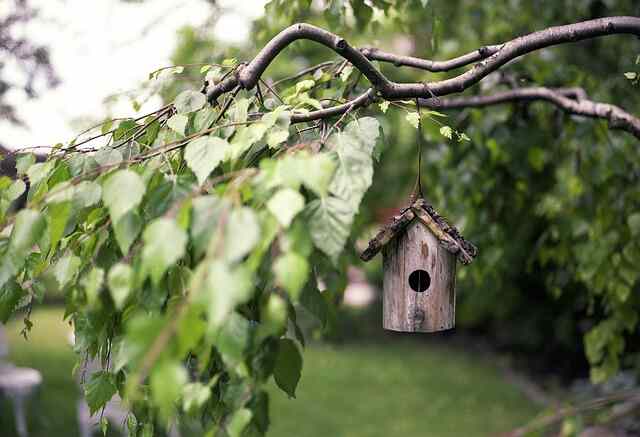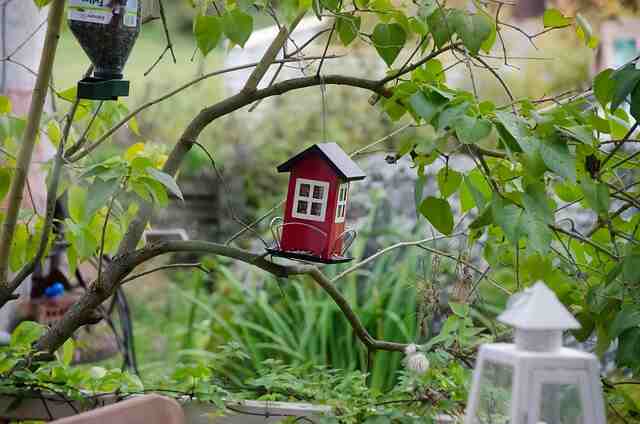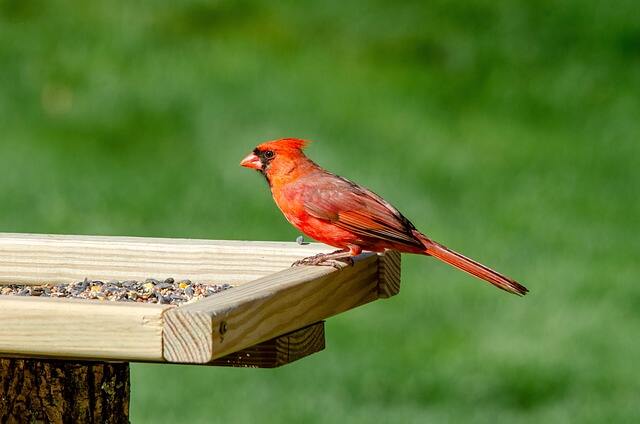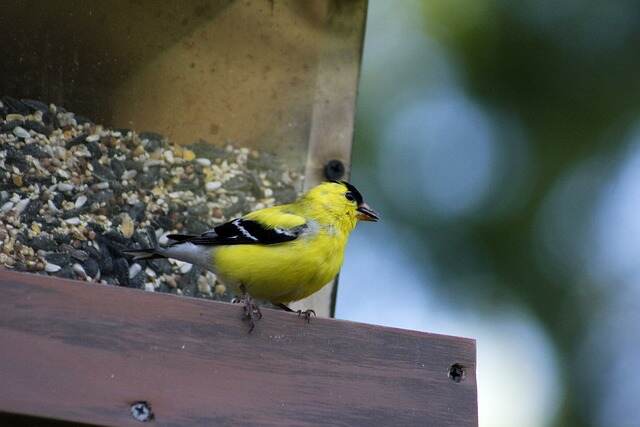Creating a bird-friendly backyard is one of the most rewarding and enjoyable ways to enjoy nature in your outdoor space. If you want to attract birds to your yard, there are a few simple steps you can take to make your backyard more hospitable for our feathered friends.
Whether you are creating a new yard or transforming an existing one, this article will provide helpful tips on how to create a bird-friendly backyard and enjoy the beauty of birds right at home.
Table of Contents
How to Create a Bird-friendly Backyard?
I. Introduction
Definition of a Bird-friendly Backyard
A bird-friendly backyard is an outdoor space that encourages and provides habitat for wild birds. This can include features such as native plants, trees, shrubs, and vines to provide food, cover, nesting sites and perching areas; a source of water; and trees or other structures providing refuge from predators.
A bird-friendly yard also limits the use of pesticides and herbicides to reduce pollution in the environment. As an added bonus, a well-designed backyard can also be aesthetically pleasing while creating a haven for our feathered friends!
Importance of Creating a Backyard that Attracts Birds
Creating a backyard that attracts birds is a great way to add beauty and tranquility to any outdoor space. It’s also beneficial for the local ecology, as birds help pollinate plants, disperse seeds and control insect populations.
Creating an inviting environment for birds isn’t difficult; it just takes some thoughtful planning. When deciding how to create a backyard that attracts birds, think about what kind of habitat you want to provide.
To make your yard attractive to feathered visitors, there are several things you can do: offer food and water sources, provide shelter from predators with thick shrubs or trees, give them perches such as bird feeders or bird baths, maintain natural vegetation and use native plants whenever possible.
Additionally, reduce the use of pesticides as much as possible so that birds aren’t exposed to toxins while in your yard.
Purpose of the Article
Creating a bird-friendly backyard is not only rewarding, but it also helps support local wildlife populations. With this comprehensive guide on how to design and maintain a backyard that attracts birds, you can easily encourage feathered friends into your outdoor space!
II. Bird-Friendly Backyard Ideas
Providing Food for Birds
Bird Feeders
Creating a bird-friendly backyard can be an enjoyable and rewarding experience. The most common bird feeders used to attract birds are hopper, window, platform, tube, suet, hummingbird and finch feeders.
For the best success when creating a bird-friendly backyard, make sure to use food that is appropriate for the type of feeder you have chosen as well as the kind of birds you want to attract.
For example, hopper feeders are great for attracting larger birds such as cardinals, jays and grosbeaks, whereas tube feeders often attract smaller perching birds like chickadees and nuthatches.
Suet feeders work best for woodpeckers, while hummingbird nectar should be reserved solely for hummers. Finally, thistle seed in a finch feeder will bring in colorful goldfinches.
- Hopper feeders are a great way to provide a variety of seeds for a variety of birds. With the large capacity hoppers, it’s easy to fill and refill them with bird food such as millet, sunflower seeds, cracked corn, and other mixes that attract songbirds like cardinals and chickadees.
- Window feeders are perfect for those who want an up close view of the birds that come to their backyard. You can fill them with black oil sunflower seed, safflower seed or even crunchy peanut butter to attract blue jays and woodpeckers.
- Platform feeders are ideal for ground-feeding birds like juncos and mourning doves. You can use shelled peanuts, dried fruit or suet on these feeders to attract these species.
- Tube feeders are also popular amongst backyard bird watchers as they easily hang from tree branches and posts. Thistle (Nyjer) seed is often used in tube feeders along with small mixed seeds to attract goldfinches, siskins and pine siskins.
- Suet cake feeders provide high energy foods like beef fat rendered into cakes, which help keep visiting birds warm during cold winter days.
- Hummingbird feeders offer nectar made from four parts water mixed with one part sugar, which attracts both Anna’s Hummingbirds and Rufous Hummingbirds in western states.
- Finch feeders that offer Nyjer/thistle seed in special ports, so only small birds can access the food inside; this keeps larger nuisance birds away from filling up all the available space!
Backyard Bird Information Tool
Use this tool to learn more about common backyard birds. Select a species from the drop-down menu to see information about the proper feeder and food type, as well as some interesting facts about the bird.
| Feeder | |
|---|---|
| Food | |
| Facts |
Bird Houses
Having the right type of bird houses can make all the difference in creating a bird-friendly backyard. There are specific bird houses for different types of birds, so it is important to research which birds live in your area and buy or build appropriate houses for those species.
Once you have the correct bird house, be sure to place it in an ideal location with plenty of access to food, water and nesting material away from predators. Additionally, find a spot that gets plenty of sunlight throughout the day, as this will help keep the inside warm during cold winter months.
To attract even more birds, consider adding some plants around the bird house for added protection and to provide additional resources. Finally, clean out the bird house regularly to prevent bacteria and parasites from building up inside and potentially harming any birds that use it.
Bird Baths
Having a bird-friendly backyard requires more than just feeders and birdhouses. Birdbaths are essential components of any bird haven, as they provide birds with vital drinking and bathing opportunities, which is especially important during the hot summer months.
There are several types of birdbaths available for the most common birds, including shallow trays, hanging baths, bubbler baths, heated baths, and ground baths. When selecting a bath for your backyard, it’s important to place it in the right location.
The best spots will be away from potential predators like cats or birds of prey and near sources of food such as feeders or nearby trees. Additionally, keep your birdbath clean to prevent bacteria growth by scrubbing it out once a week with mild soap and replacing the water every other day.
Doing so will make sure your feathered friends have access to fresh drinking water throughout the year!
Providing Shelter for Birds
Nesting Boxes
Creating nesting boxes for birds is an excellent way to create a bird-friendly backyard. Different species of birds will require different types of nesting boxes, so it’s important to research which type of box would be most suitable for the particular species found in your area.
For the most common backyard birds, a wooden nesting box with an entrance hole situated away from predators such as cats or birds of prey should suffice. It’s also important to place the nesting box at the right height and in the right spot — typically, 4–6 feet above ground level and out of direct sunlight.
Add some bedding inside like all-natural heat treated pine, aspen and paper pellets. Finally, make sure that you keep the nesting box clean by replacing old bedding materials as needed and removing any debris accumulated inside.
Doing so will ensure that your feathered friends have a safe and comfortable shelter while they raise their young.
Bird Houses
Creating a bird-friendly backyard involves providing shelter for birds in the form of nest boxes and/or bird houses. Different species of birds prefer different types of nest boxes, so it’s important to research which birds live in your area before purchasing or making one.
For example, small songbirds such as wrens and chickadees typically prefer birdhouses made with holes that are 1-1/2 to 2 inches in diameter that are placed four to eight feet high. While larger birds like woodpeckers tend to need bigger houses with cavities around six inches across set at least ten feet above the ground.
When selecting a location for the bird house, remember that you should provide suitable cover from predators and prevailing winds but still allow plenty of light for warmth, just the same way you would provide shelter for yourself!
A good choice is usually an open space close to bushes, trees or other natural shelters. You should also consider whether there is enough food nearby and if there is water available, as these will all be factors when birds decide to use your new home.
Bird Roosting Pockets
Roosting pockets are specifically designed shelters that provide a safe, warm place for birds to rest at night. They can be made from a wide variety of materials such as straw, grass, or even wood shavings and generally come in different sizes and designs to accommodate different types of birds.
When placing these pockets around your backyard, it’s important to keep them away from any sources of bright light or loud noise so that they remain safe havens for the birds staying in them. Additionally, it helps if you have several available roosting pockets placed throughout your yard, as this will give the birds more options when looking for shelter.
Creating bird roosting pockets in your backyard can provide birds with a safe place to rest and sleep. These pockets should be placed at different heights, angles, and levels of vegetation in order to attract the most types of birds. Bird roosting pockets can be made from reeds, straws, or even fabric draped over branches.
To create these pockets, simply weave together a few pieces of material into a pocket-like shape and then secure them onto tree branches. Leave some extra space between each pocket so that they are not crowded and allow the birds enough room to move around freely.
Additionally, providing nesting materials such as twigs and leaves will encourage wild birds to make use of the pockets for sleeping and breeding purposes. With a little creativity, you can easily create an inviting bird-friendly backyard!
Providing Water for Birds
Bird Baths
Creating a bird-friendly backyard is an important activity to nurture local wildlife and bring joy to our daily lives. Providing water for birds with the use of bird baths can be a great way to attract more birds to your garden! Bird baths should ideally be placed in areas that get good sunlight, away from potential predators such as cats or other animals.
If possible, include some trees nearby which will provide shelter and a place where the birds can perch while drinking the water. Additionally, make sure you keep it clean; change the water frequently, scrub the basin regularly and add stones so that the birds don’t accidentally drown.
You can also attract even more birds by adding natural food sources such as fruit, nuts and seeds for them to snack on. All these tips will help you create an inviting environment for our feathered friends!
Water Features
Bird baths with water features such as a bubbler, fountain, or mister can be used to attract birds to your backyard. Placing bird baths in a prominent spot will help attract more birds and make them feel at home.
These bird baths also provide birds with an essential source of drinking water and bathing. A variety of water features can create interesting sounds and visual effects that are sure to draw attention from curious birds.
Additionally, running these features during the colder months helps keep the water thawed, which allows for year-round enjoyment by feathered friends!
III. Gardens for Birds
How to Design a Bird-friendly Garden
Creating a Diverse Environment
Creating a diverse environment in your garden is essential if you want to attract birds. You can do this by adding a variety of plants, trees and shrubs that will provide shelter, food, nesting material and perching sites for different types of birds. Planting native species will also ensure the best habitat for local bird populations.
Include berry-producing shrubs like elderberry or serviceberry, nut-bearing trees such as walnut or hazelnut, evergreens for windbreaks, tall deciduous trees with dense foliage and low shrubs like viburnums or flowering perennials.
Leave dead branches on large trees for woodpeckers and other cavity nesting species. Include burrowing materials such as leaf litter and logs for birds to nest beneath. Finally, add water features such as birdbaths or shallow ponds to provide birds with additional resources.
IV. Plants for Birds
Types of Plants that Attract Birds
Native plants
Native plants are an important part of a bird-friendly garden. Not only do they provide food and shelter to birds, but they also help to promote healthy biodiversity in the local ecosystem. Some of the best native plants for attracting birds include flowering trees such as oaks, birches, holly, and crabapples.
Shrubs like viburnum and sumac are great for providing berries that will attract birds throughout the year. Native grasses like switchgrass or little bluestem can also be planted to provide cover for ground-feeding species.
Additionally, vines like virgin’s bower or wild grape can be used to attract climbing species such as woodpeckers that may otherwise go unnoticed. Planting these native species will create a beautiful and inviting habitat for our feathered friends!
Berry-producing Plants
Berry-producing plants are a great way to attract birds to your garden. Berries provide an essential food source and create a vibrant, colorful visual display. Some of the best plants that produce berries for birds include holly, hawthorn, crabapple, serviceberry, viburnum, mountain ash, elderberry and dogwood.
All of these varieties thrive in full sun and tolerate both wet and dry conditions. Additionally, they require very little maintenance apart from pruning or trimming during fall to encourage new growth for the upcoming year’s berry crop.
Planting a variety of these plants will ensure that you have a steady supply of fresh berries throughout the entire growing season – which means more happy birds!
Nectar-producing Plants
Nectar-producing plants are an essential part of a bird’s diet, providing them with much-needed energy during the day. The best plants to attract birds are flowering plants that offer plenty of nectar and other food sources. These can include many native wildflowers, like bee balm, butterfly weed, blazing stars and black-eyed Susans – all producing abundant quantities of nectar.
Fruits such as berries often attract birds too; blueberries, for example, provide sugar-rich nectar as well as protein from the seeds and oils in their skins. Hummingbirds, warblers and orioles are especially attracted to these types of plant life. Herbs like fennel, basil and catnip also offer valuable nutrition to birds.
Vines like trumpet creeper and clematis provide critical shelter for perching birds while they feed on the flowers’ plentiful nectar stores. Whatever you decide to grow in your yard or garden, be sure it provides necessary sustenance for the surrounding wildlife!
How to Incorporate Plants into your Backyard
Creating a bird-friendly backyard is an ideal way to attract wildlife and enjoy the beauty of nature. Incorporating plants into your outdoor space will provide shelter, food, and nesting places for birds. Start by adding native shrubs like dogwood, viburnum, or serviceberry that provide cover and berries.
Place trees such as oaks and maples with large canopies to give vertical structure. Include evergreens like pines and spruces as windbreaks, or make a screen using tall grasses.
Plant wildflowers in patches to create a nectar source for hummingbirds and butterflies. Lastly, add feeders that are stocked with seed blends specifically designed for songbirds throughout the year.
Using Plants to Provide Food, Shelter, and Nesting Sites
For many homeowners, having birds in their yards is a beloved part of the backyard experience. There are several ways to attract birds to your yard and one of the most effective is by using plants to provide food, shelter, and nesting sites! Using plants for bird habitat doesn’t have to be complicated or expensive.
Planting native trees and shrubs provides natural cover for birds looking for a place to nest. Native berry bushes such as serviceberry and elderberry can also provide an important source of nutrition for birds throughout the year.
When adding plants to your backyard, think about variety. Different types of trees will give you different kinds of berries at different times throughout the season – providing nutrition when it’s needed most!
V. How to Create Shade for Birds
Importance of Shade for Birds
Creating a bird-friendly backyard is an important step for people looking to make their environment more hospitable and inviting for feathered friends. One element of creating this type of backyard space is providing shade for birds, which can be done in a variety of ways.
Shade gives birds an area that is cooler than the open sun, allowing them to rest or feed without being threatened by extreme temperatures or predators. Shade also provides protection from rain and wind, while sheltering birds from intense UV rays.
In addition to providing physical protection, shade allows birds to hide away from prying eyes and feel secure while they spend time in the yard. Providing adequate shade should be one of the first steps when considering how to create a bird-friendly backyard.
Ways to Create Shade in your Backyard
Using Trees and Shrubs
Adding trees and shrubs to your backyard is an easy way to provide shade for birds. Trees are a great source of shade, as they provide natural cover from the sun and reduce the intensity of direct sunlight. They also create nesting sites for birds that may use their branches for safe perching.
Shrubs, on the other hand, can be used to provide a sheltered area where birds can congregate without facing too much exposure to the elements. By planting tall shrubbery, you’ll be able to create more of a barrier between birds and the open sky or any unwelcome predators.
The greenery also provides additional food sources such as fruits and seeds, which makes it an attractive destination all year round. Designing your backyard with these plants in mind will help ensure that all our feathered friends have plenty of places to rest during hot summer days.
Using Shade Cloth
Shade cloth is an effective and affordable way to create shade in your backyard for birds. It helps protect against UV rays, winds, and rain while allowing air to circulate freely. Shade cloth also allows you to customize the size of the area that you need covered.
There are several types of shade cloth available, including knitted, woven and laminated fabrics with different levels of protection from sun and wind exposure. When selecting a shade cloth fabric, look for one rated at least 70% UV protection or higher.
Installing a grommeted edge will make it easier to attach the cloth securely to the frame. Additionally, use poles or posts when necessary to ensure adequate coverage for large areas of your yard.
With just a few simple steps, you can provide birds with cool and comfortable areas where they can go when needed!
VI. Brush Pile for Birds
Importance of Brush Piles for Birds
Creating brush piles in your backyard is an important part of making it bird-friendly. Brush piles provide birds with a safe place to hide from predators and hunt for food. These piles also create a habitat where young birds can learn how to build nests and gain valuable survival skills.
Additionally, brush piles offer shelter from extreme weather conditions, providing birds with the protection they need during cold winter months. Furthermore, brush piles give birds more places to roost and rest, so they can conserve energy between flights.
Whether you make your own pile or purchase one pre-made, adding these shelters to your backyard will encourage birds to visit your space and help maintain a healthy wildlife population in your area.
How to Create a Brush Pile
Materials to Use
A brush pile is a great way to attract birds to your backyard. It provides them with the shelter and hiding spots they need, plus it can make your landscape look more attractive. To create a brush pile that’s safe for birds, you’ll need some materials.
Start by gathering branches, twigs, and logs. Make sure they’re not too long – no longer than 3 feet – as this will help keep predators out of the pile. You can also add leaves, dried grasses, hay and moss for insulation from the elements.
Finally, consider adding nesting material like string or yarn for birds to use in constructing their nests. With these supplies in hand, you’ll be able to create a cozy bird-friendly brush pile!
Placement of the Brush Pile
Creating a brush pile is an easy and effective way to provide birds with much-needed shelter and habitat in your backyard. To create a brush pile, start by gathering dead branches, twigs, leaves, bark, and other woody debris that you can find around your yard or nearby woods.
Arrange the debris into a large pile in one corner of your backyard. Once your pile is assembled, top it off with sticks and branches of varying lengths to create an interesting structure for the birds to explore.
The pile should be slightly larger than three feet high so that it provides adequate shelter from the elements. After creating the brush pile, make sure to add bird feeders and houses nearby so that the birds have access to food as well as shelter.
Tips for Maintaining a Brush Pile
The best way to maintain a brush pile is by keeping it in an open, sunny area near trees and shrubs that attract birds. Start by cutting branches and twigs from nearby trees and stacking them in piles no taller than four feet high.
Add water-resistant material like leaves or straw as insulation to keep the pile warmer during cold months. Place bird feeders nearby, so the birds can easily find food sources close by.
Prune away dead branches, twigs, and foliage regularly throughout the year so that new growth can emerge. By following these tips, you’ll be able to create and maintain a brush pile that will keep birds flocking into your backyard all year round!
VII. Conclusion
Summary of Key Points
In this article, we have outlined the various ways to create a backyard that will attract and nurture birds; from bird-friendly backyard ideas and gardens for birds, to plants that attract birds and how to create shade and brush piles for them.
We hope you find these tips helpful in creating a beautiful and inviting space for our feathered friends. Creating a bird-friendly backyard is an enjoyable and rewarding way to bring nature into your home.
It not only provides birds with a safe haven, but it can also provide you with hours of enjoyment as you watch the birds make their homes in their newfound sanctuary.
Related Post: How to Set up a Bird Feeder in your Yard? (Easy Guide)

